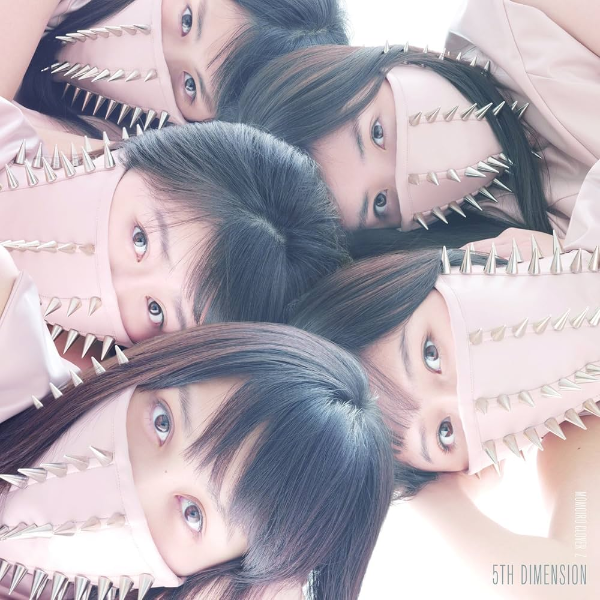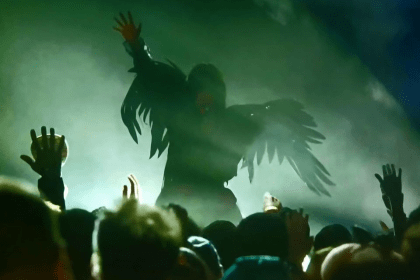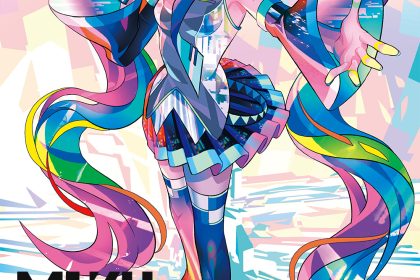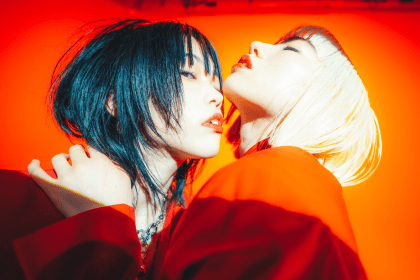5TH DIMENSION marks the long-awaited follow-up album to Momoiro Clover Z’s 2011 album release Battle And Romance. As their first album is largely considered a classic of the J-Pop genre, how does their sophomore album shape up?
As expected, 5TH DIMENSION collates the post-Battle And Romance singles and also marks some intriguing collaborations for Momoclo along the way (although producer and songwriter Kenichi Maeyamada, who is regarded as being largely responsible for Momoclo’s early sound, has less input on this album).
5TH DIMENSION is a 13 track album of which 4 were previous singles (or 5 if you count ‘NEO Stargate’ which was issued as a digital-only track just prior to the album’s launch). The album also enjoys collaborations from a broad range of songwriters who each pull from disparate music genres. All these factors combined might suggest a fractured collection of songs that have no business being on the same album. Somehow, however, Momoclo pull this off – and actually use it as a strength by keeping things interesting musically. So if you’re not keen on an EDM-influenced tune here, then there’s a pure pop one on the way next.
5TH DIMENSION’s concept is on the theme of evolution and the idea that the girls are undergoing the process of change. The videos for the likes of ‘NEO Stargate’ are examples of this theme in which Team Momoclo appear at times to be victims of a science experiment gone wrong.
But this concept is in-step with Momoclo’s evolving style and sound, which here have moved on from the often simple production and approach that were part and parcel of Battle And Romance. Visually, the masked fizzogs in the 5TH DIMENSION promo pics demonstrated a step away from their original Super Sentai-inspired characters. There’s a much more robust J-Pop element at play here which also gives Momoclo a more contemporary feel and it suggests a natural progression from Battle And Romance.
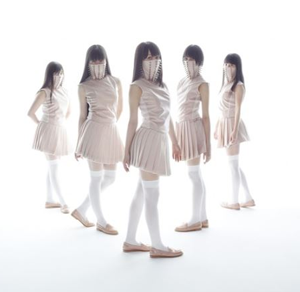
That’s not to say that they’ve dropped all the theatrical elements that are an essential part of the Momoclo DNA. Take the opening overture of the album which launches with a lengthy sample from Carl Orff’s ‘O Fortuna’ before segueing into ‘NEO Stargate’ (It’s clear that they’re keen on their dramatic orchestral overtures as the pv for ‘NEO Stargate’ utilises ‘Mars The Bringer Of War’ from Holst’s The Planets suite to similar effect). With it’s choral elements and throbbing sub-bass, ‘NEO Stargate’ presents a much more edgier Momoiro Clover Z than we’re used to. Dipping their toes into dubstep and dance is a bold move and also one that appears to have alienated a few fans. But the results speak for themselves with a powerful opener that’s clearly a strong addition to the Momoclo arsenal.
‘Kasou Dystopia’ keeps things on a pop footing with a serviceable guitar-driven slice of traditional J-Pop. It’s a fine tune but ironically its conventional arrangement makes it sound out of place on an album that adopts such a diverse range of sounds and song structures.
One of Kenichi Maeyamada’s contributions to the album. ‘Mouretsu Uchuu Koukyoukyoku «Mugen no Ai»’ (or ‘Fierce Space Symphony. 7th Movement «Infinite Love»’ ) keeps the epic aspects of our colourful combo flying high with its euphoric melodies and dramatic choirs, augmented by some select guitar work by ex-Megadeath guitarist Marty Friedman. Of course, this was the single release that also featured the bonkers pv featuring the girls as Space Pirates On Bikes (In Space) – apparently designed by noted illustrator Yoshiyuki Sadamoto, who had previously worked on anime titles such as Neon Genesis Evangelion, FLCL and Summer Wars.
5 The POWER is an odd number with its incremental percussive intro – actually a sample taken from Hungarian singer Koncz Zsuzsa’s 1972 release ‘Visz a Vonat’. If that’s not bizarre enough, writer Ito Seiko and arrangers MURO and SUI have also apparently noted a resemblance to the 1979 song ‘Interzone’ by Joy Division and have overlaid similar ghostly warblings to the ones made by lead singer Ian Curtis. The actual vocal elements of the track shift position once again with some hip-hop-inspired rap battling between the girls, before switching gear for a horn-fuelled melodic chorus. It’s a very unusual way to construct a song but one that somehow becomes greater than the sum of its parts. Bonus points for the key change (at which point everyone must of course stand up…).
The energetic ‘Rodo Sanka’ had the privilege of being the first post-Battle And Romance single release back in 2011. It also marks the first collaboration between Momoiro Clover Z and The Go! Team’s Ian Parton. It’s a combination that works surprisingly well with all the familiar Go! Team licks in place (percussive horns, slappy bass – provided by fellow Go! Teamster Jamie Bell – and nods to 70s soundtracks) providing a strong foundation for the harmonic vocals of the Momoclo girls, here singing the praises and nobility of work.
‘Get Down’ comes across as a zippy J-Pop number with its buzzy rhythms, which makes its roots all the more odder as it was penned by Damian Kulash of US rock outfit OK Go.
‘Otome Sensou’ appears to be another nod to classic Momoclo as it could easily feature as the theme tune to a Tokusatsu TV series. It also benefits from the use of real string and brass instruments (which should keep the music fundamentalists happy), an arrangement courtesy of Kenji Kondo – better known as one of the members of the Kuricorder Quartet (notable for their unique version of the ‘Imperial March’ from Star Wars).
There’s a hint of The Beatles on ‘Tsuki no Gingami Hikouki’, largely due to the use of Mellotron on this panoramic pop number. It’s also a fine opportunity for the members to showcase their solo voices with vocal segments that are a little more restrained than on the power pop utilised elsewhere on the album. It’s quite an interesting combo of ballad-style singing matched up with sweeping film score arrangements.
The Narasaki (Coaltar of the Deepers) penned ‘BIRTH Ø BIRTH’ is one of several tracks on the album that give a few nods to the EDM scene with its dubstep references, but also manages to merge these elements successfully with more melodic segments. Narasaki, of course, also gave us the superb ‘Pinky Jones’ from Battle And Romance.
For those wishing for more of return to classic Momoclo, then ‘Joukyu Monogatari -Carpe diem-‘ serves up a snappy number that could have been culled directly from Battle And Romance. This tune comes courtesy of veteran anime theme composer Yokoyama Masaru (who also composed previous Momoclo track ‘Chai Maxx’, to which this bears a similarity). Likewise, ‘Soratobu! Ozashiki Ressha’ with its train sound effects and voiceover merged with a belter of a showtune song demonstrates again Momoclo’s flair for the theatrical with a clear nod to classic Momoclo.
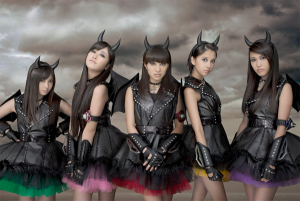
Another notable collaboration is ‘Saraba, Itoshiki Kanashimitachi yo’, which features writing and production credits by none other than Japanese guitar legend Tomoyasu Hotei. It’s a superb slice of power-driven baroque J-Pop that emerges as one of Momoclo’s finest moments. It’s also the outfit’s highest charting single, landing the prestigious No. 2 slot in the Oricon Weekly Charts in November 2012.
Closing track ‘Hai to Diamond’ is another Kenichi Maeyamada number which is a bit of a slow burner with its traditional ballad opening. However, it’s another track that allows each member to have their own solo spot on vocals and there’s also a nice use of strings for a song which somehow works perfectly as a closing track.
5TH DIMENSION gives you precisely what you’d expect from Momoiro Clover Z, while also showing a very definite evolution in their style and approach. They still have a talent for widescreen J-Pop, continue to celebrate a theatrical and visually eye-catching element to their tunes and also continue to collaborate with some of the oddest choices of writers on the Japanese music scene, whilst simultaneously pulling it off.
The real question is where Momoiro Clover Z take their theory of evolution to next.

